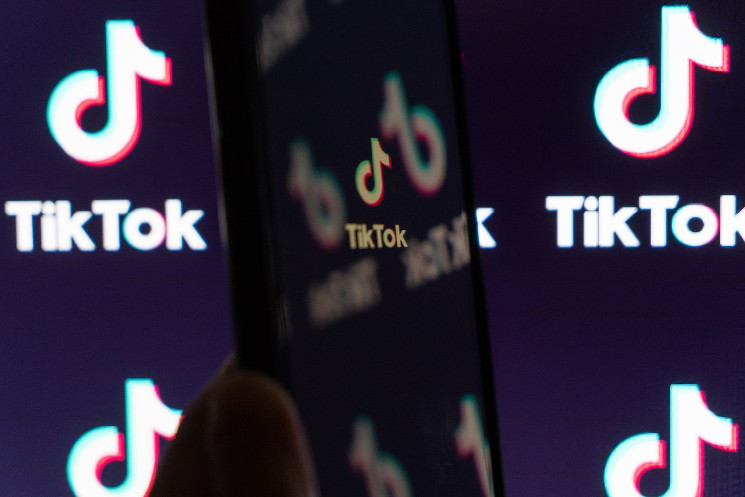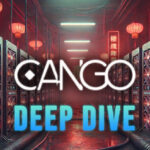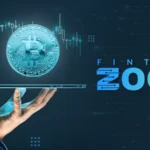Think about a world the place your digital id is really yours. All posts, connections, and interactions are usually not locked to the partitions of company platforms, however exist as extensions of private autonomy. This isn’t a utopian imaginative and prescient, however a vital evolution of social media in an age the place digital sovereignty is a basic proper.
For many years, we now have unconsciously traded digital independence for the comfort of a centralized platform. Fb, Twitter, Instagram, and these platforms are shaping our digital reside, however they perform like gold cages. Each put up we create, each relationship we domesticate, each dialog we have interaction in is in the end managed by an organization that may change, monetize, or erase the digital presence in a single coverage change or algorithmic choice.
Tiktok’s new future
As soon as Tiktok selected the way forward for possession, Challenge Liberty partnered with Reddit co-founder and pioneer of on-line neighborhood buildings, Alexis Ohanian, and famend investor and entrepreneur Kevin O’Leary. Shark Tanktake the platform on-chain. why?
At its coronary heart, that is greater than only a tiktok. It is about who controls the digital house the place billions join, create and eat data. For a very long time, the Web’s most vibrant communities have been formed by a small variety of corporations and in the end ruled. Challenge Liberty guides the motion to vary it, guaranteeing that social networks present companies not solely to those that personal them, but in addition to those that empower them.
The important thing to this shift is a public, public, unauthorized blockchain developed by the Challenge Liberty know-how staff and designed particularly for mass social networking, strengthening the foundations of user-driven web and prioritizing resilience to interoperability, knowledge sovereignty, and centralized administration. Collectively, these initiatives intention to maneuver social media from company possession to an open user-controlled mannequin.
Tiktok would not differ both for all its cultural influences both. As debates on possession and knowledge practices proceed, the larger points stay unresolved. Ought to a single entity management the social construction of a technology, whether or not it is a authorities or an organization? What’s at stake isn’t just who owns Tiktok, but in addition whether or not the platform at that scale can function outdoors of centralized management. When rethinking inside a distributed framework, it requires a basis constructed on true interoperability, user-owned knowledge, and open governance. That is the place the frequency is entered.
From Tiktok to Blueski: Constructing a decentralized future
Tiktok’s future points spotlight a a lot bigger shift in fascinated with social media. The necessity for decentralization is not theoretical, it’s an pressing want. Bluesky, an open supply social media undertaking, is one try to reply that decision.
Bluesky isn’t just one other platform, however quite represents an effort to redefine the connection between customers and digital id. However true digital liberation requires greater than good will and requires structural dedication to full decentralization. Whereas we will get a glimpse into what a decentralized social net seems to be like, there are nonetheless vital vulnerabilities.
For all of its promise, Bruski nonetheless depends on structural chokepoints that pose dangers to long-term decentralization. Storage nodes stay centralized primarily beneath the management of Bluesky PBC or third-party suppliers. Which means person knowledge remains to be housed in locations the place it might turn into a management level. The relay and firehose methods accountable for knowledge distribution stay concentrated within the arms of a small variety of folks. It is usually constructive that BlueSky implements the W3C customary for distributed identifiers (DIDS), however the PLC (public ledger of credentials) listing is centralized. Whereas these might look like small technical particulars in the meanwhile, historical past repeatedly reveals how seemingly minor technical selections turn into the very mechanism by which energy is built-in and autonomy is eroded.
Frequency, the spine of the distributed social net
That is the place frequencies enter the picture, not simply as a blockchain, however as a complete new framework for digital id and social media governance. Frequency doesn’t merely change the present mannequin. We’re rethinking how we work together on-line from scratch. As a substitute of central authorities figuring out phrases, frequency ensures that customers, not platforms, retain the keys of digital reside.
Decentralization is greater than technological change, it’s about restoring basic rights. Customers must have the power to grant entry to their knowledge, however they should have the facility to revoke it simply as vital. The relationships they construct on-line – followers, connections, conversations – should belong to them, to not a platform the place they’ll freely manipulate and erase them.
Goal decentralization
Frequency operates on the precept of minimal and purposeful decentralization that makes ecosystems viable for long-term sustainability on a inhabitants scale. The one knowledge saved within the chain is crucial to ensure particular person knowledge rights. This design method permits for environment friendly chain optimization, focusing totally on actions associated to accounts, graphs, and communication primitives. This core social focus permits you to design tokenized incentives round managing community capabilities with particular incentives for creators, shoppers and different extra particular actors left to the left at a better stage of the know-how stack.
Person-owned Web guarantees are incomplete with out sturdy safeguards to guard private knowledge. Frequency ensures that customers are extra encrypted than data, and granular management that determines how knowledge is shared. On the similar time, they need to have the flexibleness to impose platform-specific restrictions and be sure that their content material solely seems within the digital house they need to see. Moreover, they have to be capable of delete content material at their very own discretion. You additionally want the facility to restrict your content material to a particular platform in case you select to take action.
This method straight addresses the basic obstacles that beforehand hindered scaling of decentralization. Frequency ensures that even your personal node operators are usually not able to modifying or censoring person knowledge. Gives a distributed backup of Bluesky’s Firehose, permitting user-generated content material to be accessed past the management of a single social gathering. Its structure is designed for not solely ideological purity but in addition sensible sustainability and scalability, offering minimal latency and cost-effective operation, guaranteeing that the system stays viable for mass adoption.
Obtain digital self-emphasis
The Web was meant to be open, interconnected and free. However at this time we’re at a crossroads. They may both proceed to depend on social media managed by companies or take the mandatory steps to create a digital future owned by extra open customers.
Bluesky takes a step ahead, however it is going to in all probability be one other walled backyard with out coping with the remaining centralization factors. Tiktok presents an excellent larger problem. There isn’t a level within the debate over its possession. The true query will not be who ought to personal Tiktok, however whether or not the social media large needs to be owned in any respect within the conventional sense. Decentralization provides a brand new manner by which platforms are constructed round person sovereignty quite than company management.
Frequency is one step nearer to regaining the unique Web guarantees. True digital liberation requires releasing itself from the info monopoly that outlined the social media period. This isn’t only a technical improve, it is a vital change in energy.












